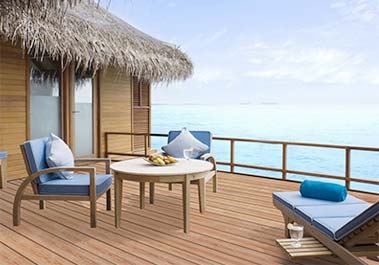WPC material, also known as Wood Plastic Composite material, is a new type of composite material that has emerged globally in recent years. It refers to a new wood material made by mixing more than 35%-70% wood powder, rice husk, straw, and other waste plant fibers with essential additives, using polyethylene, polypropylene, and polyvinyl chloride instead of the usual resin adhesives. This mixture is then processed into boards or profiles through plastic processing techniques such as extrusion, molding, and injection molding.
Due to the characteristics of both wood and plastic in WPC material, it has the following excellent properties:
Good Processing Performance
WPC material contains plastic and fibers, thus having the thermoplasticity and similar processing ability of wood, such as being sawn, nailed, and planed with woodworking tools. It has a significantly better nailing power than other synthetic materials. Its mechanical properties are superior to wooden materials. The nailing power is generally three times that of wood and five times that of particleboard. It also has similar secondary processability to wood, such as cutting, gluing, and being fixed with hardware connectors.
Good Strength Performance
Since WPC material contains plastic, it has a good elastic modulus. Additionally, due to the adequate mixing of fibers and plastic, it has physical and mechanical properties comparable to hardwood, such as compressive and flexural strength, and its durability is significantly better than that of ordinary wood materials. It does not crack or warp and has no wood scars. Its surface hardness is high, generally 2 to 5 times that of wood.
Water and Corrosion Resistance, Long Service Life
Compared with wood, WPC material and its products can resist strong acids and alkalis, are water-resistant, corrosion-resistant, and do not propagate bacteria. They are not prone to insect damage or fungal growth. The service life can be as long as 50 years.
Excellent Adjustability
Using additives, the plastic can undergo polymerization, foaming, curing, and modification to change the density, strength, and other properties of WPC material to meet special requirements such as aging resistance, antistatic, and flame retardant.
High Recycling Rate
The greatest advantage of WPC material is that it turns waste into treasure, and can be 100% recycled. It can decompose and does not cause "white pollution," making it a truly green and environmentally friendly product.
Wide Range of Raw Material Sources
The plastic raw materials for producing WPC material are primarily high-density polyethylene or polypropylene. The wood fibers can be wood flour, rice husk, or wood fibers. Additionally, a small number of additives and other processing aids are needed.
Good Decorative Effect
Based on needs, it can be made into any shape and size. The surface of WPC material products is smooth, flat, solid, and can be embossed with three-dimensional patterns. By adding various colorants or films, colorful products of various kinds can be produced.
One of the main uses of WPC material is to replace solid wood in various fields. The most widespread use is in building products, accounting for 75% of the total consumption of WPC material. It is mainly used in the construction materials, furniture, and logistics packaging industries. Specific applications include wood-plastic indoor doors, skirting boards, whole cabinets, wardrobes, exterior wall panels, ceiling panels, decorative wall panels, outdoor flooring, railing posts, plastic-steel pavilions, garden railings, balcony railings, flower bed fences, leisure benches, tree pits, flower racks, flower boxes, air conditioner racks, air conditioner covers, blinds, road signs, transport pallets, etc.


